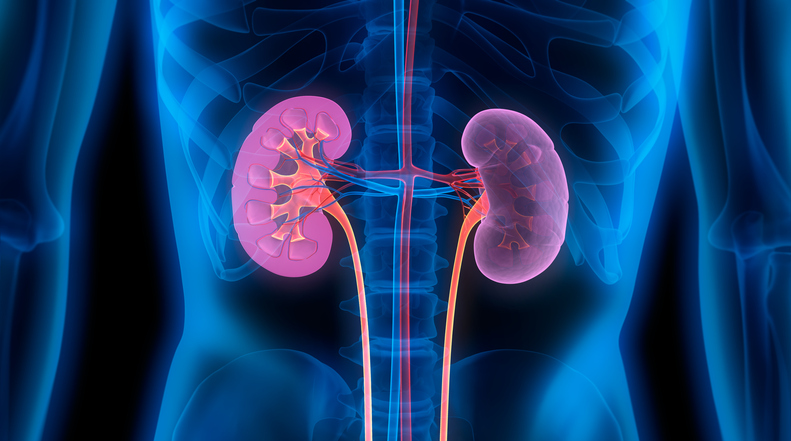- Image via Wikipedia
Highlights of the important and the interesting from the world of health care:
A time for dying: If you’re worth more than $3.5 million, that time apparently is 2010. Due to what Nobel-Prize-winning economist Paul Krugman labels Bush-era “fiscal fraud,” the estate tax is set to expire in 2010. That means if an individual worth more than $3.5 million dies on Dec. 31, his estate would be taxed at a rate of 45 percent. But if that same person dies Jan. 1, 2010, there’s no estate tax at all. And on Jan. 1, 2011, the tax is scheduled to resume, applying to estates worth more than $1 million at a rate of 55 percent. (See Washington Post Blogger Ezra Klein’s handy graph summarizing the tax here.)Â The effect is that some wealthy individuals have a clear incentive to die in 2010. To be clear, this tax only applies to about 5,500 people a year, the Wall Street Journal reports. Obviously, this odd situation has made decisions tough on some wealthy families dealing with end-of-life issues, and has led to this humorously macabre anecdote from the Journal:
One wealthy, terminally ill real-estate entrepreneur has told his doctors he is determined to live until the law changes. “Whenever he wakes up,” says his lawyer, “He says: ‘What day is it? Is it Jan. 1 yet?'”
The reason behind this strange phenomenon, according to Krugman: “Way back when, the Bush team used sunsets that were never intended to take effect in order to hold down the official cost of their tax cuts. Their assumption was that at a later date they’d be able to make the thing permanent.” The Journal speculates that Congress could pass an estate tax in the future and make it retroactive to 2010, however.
Robots and immigrants the answer to nursing shortage? With the U.S. facing what could be a shortage of 260,000 registered nurses by 2025, according to one projection, one might think the nation could headed for big trouble, with health-care providers stretched to the breaking point. Not so, says the Health Business Blog. The solution lies in first in stepping up efforts to recruit nurses from foreign countries, the blog says. Of course, for that to happen we’ll have to get past the mostly irrational fear of immigrants that grips some Americans. Next, the blog argues, the solution lies in utilizing robots to perform “mundane” medical functions like checking vitals, providing encouragement and reminding patients to take their medications.
Indeed, one Ohio hospital plans on using “robots” to help health providers interact with patients via web cameras and a microphone, but that sounds like a far cry from the Health Business Blog is talking about. Is it likely that elderly patients will be comfortable interacting with nurse robots performing the tasks described above? Perhaps someday, but with the nursing shortage already acute and getting worse, its seems that immigration is the far more likely solution at this point.

Health Benefit Consultants, Share Your Expert Insights in Our Survey
Share some of the trends you are seeing among your clients across healthcare, including chronic conditions, behavioral health, healthcare navigation, and more.
Is Richmond, Va., the future of American health care? The rationing bogeyman has reared his ugly head again, and he’s not so scary. Richmond has seen its number of hospital beds shrink from 4.8 per 1,000 residents to about three, the New York Times reports. The Times’ word for this? Rationing. The result? Quality of care is good and continues to improve, the Times reports, citing Medicare data showing that Richmond hospitals do a better-than-average job of treating heart attacks, heart failure and pneumonia.
Better yet, costs have fallen. In 1992 Richmond ranked 126th out of 305 metropolitan areas in per-capita Medicare spending. In 2006, that number had vastly improved to 39th. The Times’ story is well worth a read and shows that, in health care, the “more-really-is-less” (and vice versa) cliche may actually be true.
Hangover help: The always fair-and-balanced Fox News offers a little advice for those who’ve indulged a bit too much on New Year’s Eve. Do’s include: a bacon sandwich, sports drinks, water and prickly pear cactus (whatever that is). Do nots include: coffee, hair of the dog (Damn!), and exercise (thank God). As for avoiding a hangover in the first place, in general, the darker the drink the more likely it is to induce a hangover. If at all possible, drink water before, after and while imbibing. Most certainly avoid acetaminophen, the active ingredient in Tylenol, which can cause liver damage when it interacts with alcohol. Aspirin is much better. And of course, “The most effective way to avoid the symptoms of alcohol induced hangover is to practice abstinence or moderation,” but that’s obvious, no fun and no one wants to hear it, so pretend you didn’t read it here.














